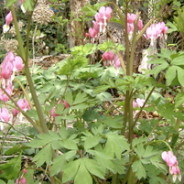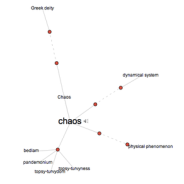Running: An Image for Writing and Healing from Natalie Goldberg
Writing Down the Bones by Natalie Goldberg is one of those books that just seems to have had an influence. It was first published in 1986, but still now, it’s one of those books, people seem to find their way to it. Not too many years ago now, I was at my younger brother’s wedding, I was talking to one of his friends, he was beginning to take an interest in writing, I asked him if he’d heard of the book, he said, yes, in fact it was the book right now on his nightstand. I first came across the book myself nearly twenty years ago now. April 1988. I know the month and year because I was on a trip to New Orleans at the time. It was the first time I’d ever been to New Orleans. One morning, while my husband was in meetings, I rode the St. Charles Streetcar (which, I’m pleased to report, is due to be back up and running its old route at the end of this year). In any case, I got off the streetcar at a stop near Loyola University and I went into a small bookshop and I came across Natalie Goldberg’s book, Writing Down the Bones. It’s not a long book—as I remember, I read much of the book while I rode the street car around on its loop a couple of times, and I still had time to look out at the city. I was very taken with the book. What I liked most about it, and still like, is this sense she conveys of writing as a practice, a lifelong habit, something that one does, and can continue to do, through different kinds of weather—different moods—the sense that one can stay with it—like with running—or meditation. And that staying with it in this way can lead to something of value. She writes [p. 11]: This is the practice school of writing. Like running, the more you do it, the better you get at it. Some days you don’t want to run and you resist every step of the three miles, but you do it anyway. You practice whether you want to or not. You don’t wait around for inspiration and a deep desire to run. It’ll never happen, especially if you are out of shape and have been avoiding it. But if you run regularly, you train your mind to cut through or ignore your resistance. You just do it. And in the middle of the run, you love it. When you come to the end, you never want to stop. And you stop, hungry for the next time. But if you run regularly, you train your mind to cut through or ignore your resistance. And in the middle of the run, you love it. I’ve never been a runner, but at different times in my life (not right now—sigh) I’ve been a regular swimmer. And I feel as if I’ve had similar conversations over and over, in the locker room at the University pool in Missouri, at the YMCA in Durham, North Carolina, at the Rockville Swimming Pool in Maryland, and here, at the YWCA and then the YMCA. Conversations with wet hair after swimming. Someone says, I wasn’t going to come this morning. I know,...
read more

